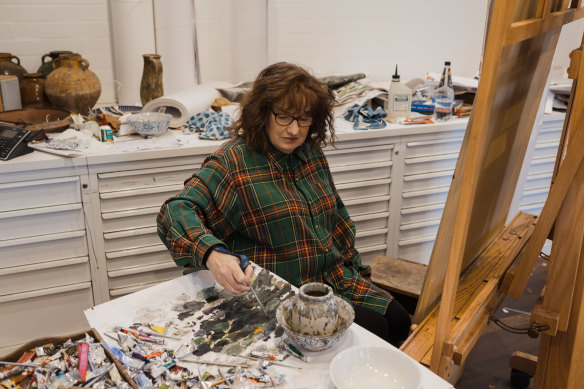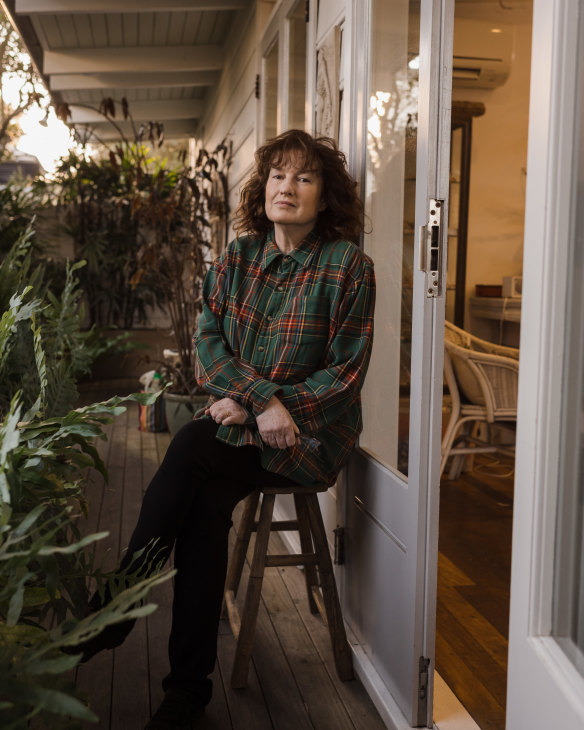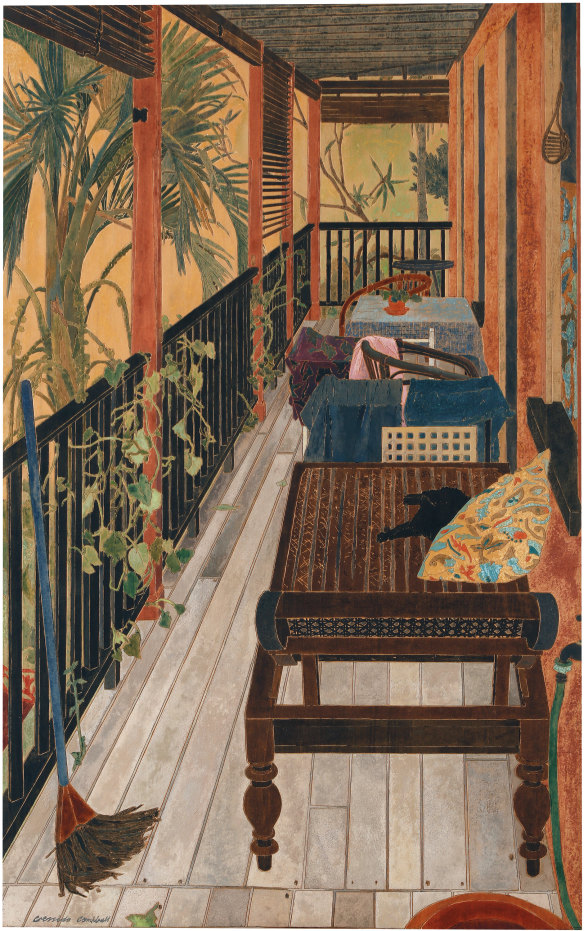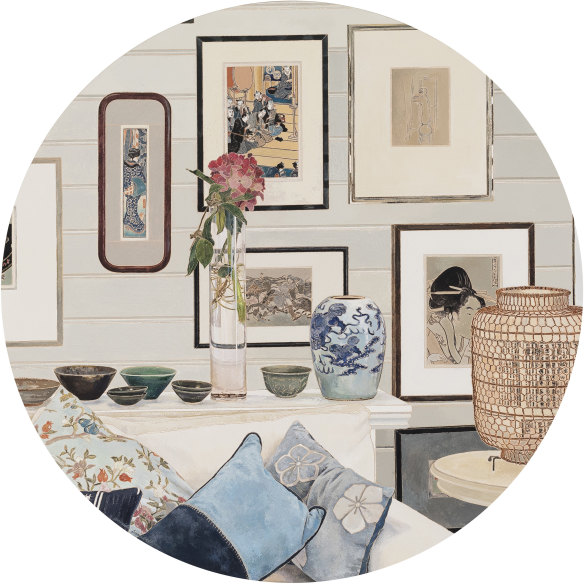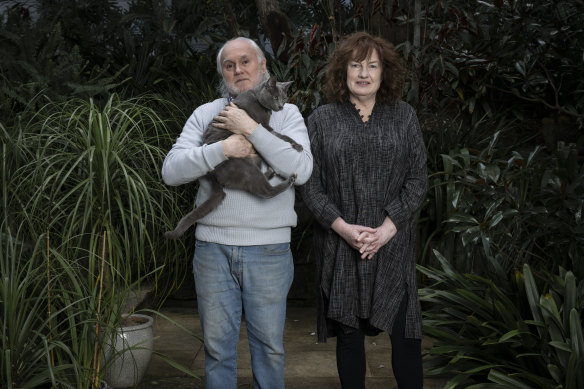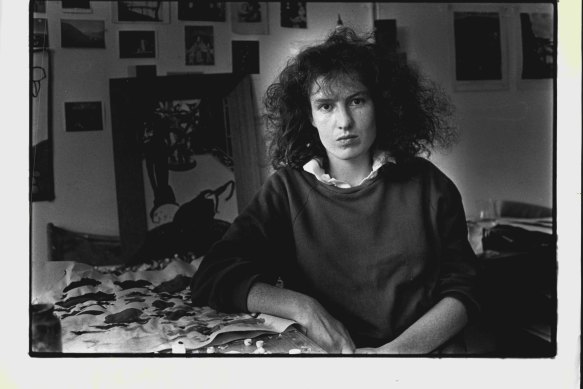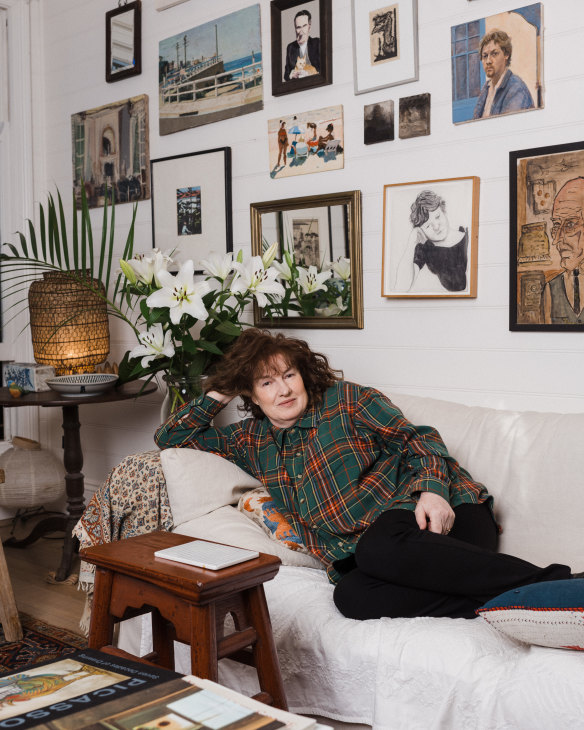Two years ago she was suddenly paralysed, now Cressida Campbell makes history
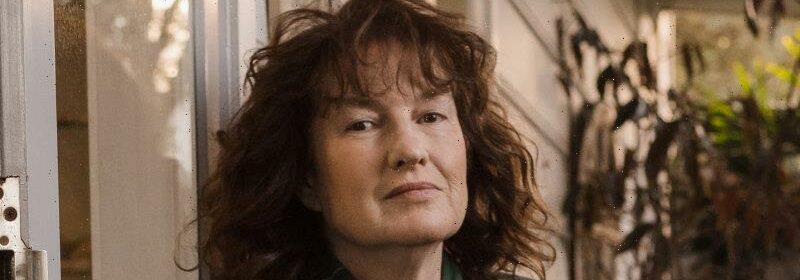
By Susan Wyndham
Artist Cressida Campbell at her home at Bronte Beach.Credit:James Brickwood
Cressida Campbell has been promising for years to start the No Change Party, a joke that goes to the core of her nature. “I just wish everything didn’t have to change all the time,” she says, sitting at her easel in the studio behind her century-old house. Of course she appreciates advances in science, medicine and women’s lives, but she hates relentless urban development, all the texting instead of conversation.
Time slows at the weatherboard cottage near Sydney’s Bronte Beach, with its unmown nature strip, gnarled banksias and white picket fence. Campbell has lived here for 22 years and swears she won’t move again. In the stillness of rooms familiar from her pictures, Minski and Gingko, her Russian cats, dart among antique ceramics and white upholstery.
Change happens incrementally in Campbell’s distinctive work and her droll, down-to-earth manner is unaffected by success. But in recent years her career has accelerated and her life has taken too many life-and-death turns.
A lifetime survey of her work opens at the National Gallery of Australia on Saturday, with more than 140 woodcut paintings, prints and drawings from her 1960s childhood to the present. But the creative process cannot be rushed and when we talk in mid-September she is still painting the final panel to be hung.
Cressida Campbell says of her art: “It’s not work, I don’t even like the word vocation.”
Night Studio belongs to an ambitious series she began in the past decade after the death of her first husband, film critic Peter Crayford. Long hours lying on the sofa presented her with moody views of rooms and garden, shadows and reflected light. Night Studio transforms the louvred window in front of us into a complex mass of vertical plants and horizontal glass slats.
Campbell squeezes tubes of watercolour onto a paper palette, dabs a fine wet brush, leans into a small patch of painted foliage. She uses Winsor & Newton Cotman watercolours for their rich chalky pigments – “student quality because I buy so much and paint so thickly”.
This is just one step in a laborious process. Campbell draws her images on sheets of plywood, carves along the pencil lines with a dental drill-bit, applies many layers of paint, and dampens the surface before pressing down thick etching paper with a roller to create a single print. Both woodblock and print become artworks with differently textured surfaces, enhanced with more brushwork.
Cressida Campbell’s Interior with Cat, 2010, sold for $515,455 in August.
Delivered to Canberra a week before the opening, Night Studio has occupied her for four months, up to nine hours at a stretch. In a past push, she says, “I once spent three days and three nights nonstop to get a picture finished. When I went to bed my body was hot and feverish.”
Campbell’s singular technique – part painting, part print – was suggested in the 1970s by a teacher at East Sydney Technical College (now the National Art School), where she rejected the fashion for “free” painting with big brushes. Little has changed in her process except for the increasing size and intricacy of her pictures, as she calls them, and the value placed on them.
I’ve been a passionate follower of Campbell’s work since the mid-1980s, when a young journalist’s wage could stretch to buying two of the woodblock prints she made in small editions. They are still treasures, but I have watched wistfully as her skill and popularity made prices soar further and further out of reach.
Cressida Campbell’s The Verandah from 1987 sold for $515,455.
While buyers line up for her work here and overseas, Campbell’s output is only five or six works a year. A show at Philip Bacon Gallery in Brisbane sold out before opening in July at prices up to $420,000. Three years ago Smith & Singer auction house sold Interior with Cat 2010 for $292,800 including the buyer’s premium. Last month they resold the same large woodblock for $515,455, equalling the record price for Campbell and for an Australian female living artist (both set earlier this year by her woodblock The Verandah 1987).
In the studio, as the photographer and I watch her paint, Campbell asks if she should carve into the lines between the louvres in Night Studio to better define them. We say no, and she says she probably will: “If you ask, it means you’re not entirely happy with the results.” She often seeks opinions of work in progress from her cleaner or whoever is around. Is the cleaner a good critic?
“She is really, because she’s got an eye, and if you go through a room in a museum, often there’ll be a lot of boring pictures and one great one and the people will be drawn to it. You don’t have to be some kind of intellectual genius to respond visually. The artist has made the visual impact as interesting as possible and it’s combining design, colour, whatever style it is, and obviously it’s some kind of harmony.”
Cressida Campbell’s woodblock painting Interior with Chinese Lantern (2018).Credit: Supplied
Nick Mitzevich, director of the National Gallery, met Campbell through her artist friend Margaret Olley 20 years ago and was keen but unable to show her at public galleries he ran in Newcastle, Brisbane and Adelaide. The long wait led to auspicious timing, with the Gallery’s focus on women artists in Know My Name, a program of exhibitions in the past two years and a commitment to raise representation of women. There have been shows of Campbell’s work at state galleries and the SH Ervin Gallery in Sydney, but nothing on this scale.
“Having a solo show at the National Gallery of Australia is a pretty huge deal in an artist’s career,” says Sarina Noordhuis-Fairfax, curator of Australian prints and drawings. In planning the survey she insisted Campbell should stand alone like artists of the past, Margaret Preston or Clarice Beckett, who gained prominence after retrospectives at major galleries.
Cressida Campbell and her partner Warren Macris, with pet cat Minski.Credit:Louie Douvis
“To my knowledge we haven’t done a huge survey on a living female artist before. We’ve had such a long time of male show after male show, it’s time for the women to take centre stage and Cressida’s just astonishing.”
Noordhuis-Fairfax has hung the pictures thematically rather than chronologically, showing how Campbell returns to similar subjects as her style evolves. Within the themes of still life, interiors, plants, studio, bushland, water views are close observations that make each scene intimate and beautiful but never pretty: a speckled tree trunk or a wire fence, a Chinese bowl or an electric fan, each painted with equal care.
“Some of the earlier works are much more graphic and flatter, and then the technique she’s developed over the last decade or so is increasingly detailed and almost photographic, so you can really see the shift,” Noordhuis-Fairfax says.
Campbell was consulted on the selection and display of works borrowed from private collectors and institutions. She chose wall colours from charcoal to eucalyptus, arranged a still-life of objects from her home, gave background on each picture, and collaborated on a splendid companion book and film. A self-described “control freak”, she is excited and drained by the intensity of the project.
Two years ago, she was suddenly paralysed on her right side, unable to touch her nose with her painting hand. After fears of a stroke or tumour, she had successful surgery for a rare, fast-growing abscess on the brain. At 62, she has made a complete recovery, her memory precise, her painting miraculously unaffected, though anti-seizure medications make her tired.
Cressida Campbell early in her art career.Credit:Lorrie Graham
A week before her near-fatal illness struck, her new partner Warren Macris, a fine art printer, had asked her to marry him. “Talk about a test for him,” she says. They married this April, making 2022 a joyful year, and Macris is a professional complement to his low-tech wife. Where Crayford helped produce the exquisite 2008 book The Woodcut Painting of Cressida Campbell, Macris has printed huge banners for the National Gallery.
For someone who dislikes change, Campbell is stoically resilient. She lost her mother Ruth in 2018 and brother Patrick, a solar energy scientist, in 2020. Despite a liking for solitude, she is tightly bonded to her family. She is the youngest of four children of journalist Ross Campbell, who wrote a weekly column about his family. “I was 21 when Dad died,” she says, “so I’ve always been very aware of the preciousness of life and I don’t really waste time.”
The Campbell sisters are all creative, Sally as a film and textile designer, Nell as an actor. Sally’s fabrics adorn Campbell’s house and pictures, Nell travelled with her in 2014 to look at German Romantic artists, whose light and shade entered her painted rooms. She once half-joked to Patrick that she would get dementia by doing the same thing all the time. “He said, ‘Don’t be ridiculous Cressie, every time you do a new picture you’re solving a new problem’.”
Among the juvenilia on show is one of her stamp albums, where she learnt how to hang a salon wall of paintings. In her childhood art she sees her enduring strengths – colour and pattern – and her “weakness” for focusing on detail over proportion.
A lifetime survey of Cressida Campbell’s work opens at the National Gallery of Australia on Saturday,Credit:James Brickwood
At six years old, encouraged by her artistic mother, she won a worldwide children’s competition with a collage painting of animals and children on a zebra crossing. Her prize of a pink shirt did not impress the red-haired tomboy. At 11 she won a poster competition for National Parks and Wildlife, awarded a trip around Australia’s natural wonders that launched her love of fancy hotels.
Scattered through the exhibition are works that represent Campbell’s creative lineage: Margaret Preston, John Brack, Djirrirra Wunungmurra and Kitagawa Utamaro, an 18th-century Japanese ukiyo-e print master. Among the art covering her own walls hangs an Utamaro print of two women, which she bought online at 2am from a New York auction, misjudging the exchange rate. “But I don’t regret it, I adore it.”
Apart from a few portraits and self-portraits, there are no people in Campbell’s pictures, but everywhere are traces of human presence – open books, half-eaten meals, an unmade bed. Her perfectionism combines with a liking for asymmetry and partly seen objects; she is willing to chop up a woodblock to find a more dynamic arrangement.
Some recent works are round, with a cropped, cinematic focus: “It’s a real challenge and I’ve loved doing it for compositional reasons. Interiors are very often straight lines and a circle cuts them. And you’ve got that voyeuristic feel as well.”
The circles also suggest peepholes into the artist’s mind. Seen as a whole, her body of work will tell a life story of great talent, dedication and growth. “It’s not work, I don’t even like the word vocation,” she says. “It’s just something I love to do and explore, so I’m driven to do it.”
Cressida Campbell is at the National Gallery of Australia, Canberra, from September 24 to February 19.
To read more from Spectrum, visit our page here.
A cultural guide to going out and loving your city. Sign up to our Culture Fix newsletter here.
Most Viewed in Culture
Source: Read Full Article
